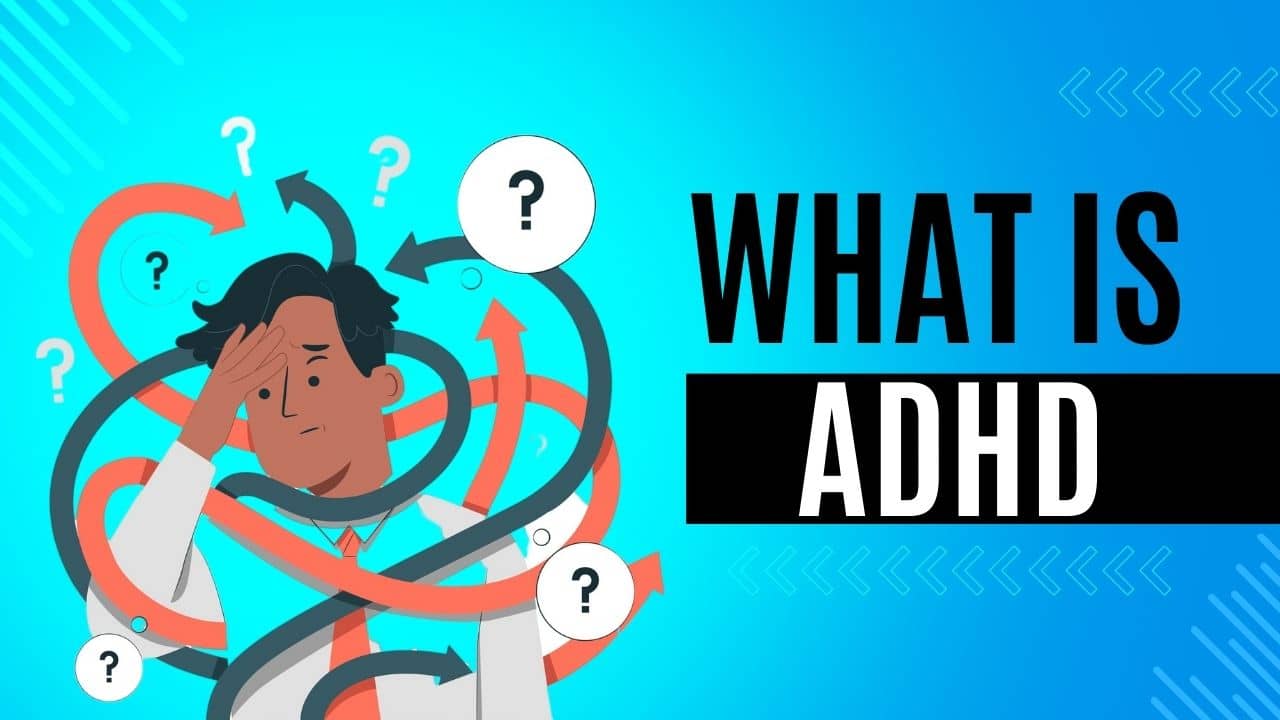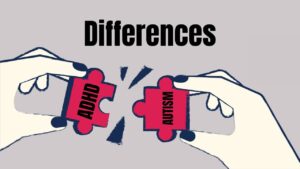Attention Deficit Hyperactivity Disorder (ADHD) is a neurodevelopmental disorder that affects both children and adults. Characterized by symptoms of inattention, hyperactivity, and impulsivity, ADHD can significantly impact daily life, academic performance, and social interactions. This comprehensive guide aims to provide an in-depth understanding of ADHD, including its symptoms, causes, diagnosis, and treatment options.
What is ADHD?
ADHD, or Attention Deficit Hyperactivity Disorder, is a chronic condition that affects millions of children and often continues into adulthood. It encompasses a range of symptoms that can be broadly categorized into three types: predominantly inattentive presentation, predominantly hyperactive-impulsive presentation, and combined presentation.
ADHD Types and Symptoms in Children
Attention Deficit Hyperactivity Disorder (ADHD) manifests in different ways and is categorized into three main types based on the predominant symptoms: Inattentive Type, Hyperactive-Impulsive Type, and Combined Type. Understanding these types and their specific symptoms can help in early identification and effective management of the condition.
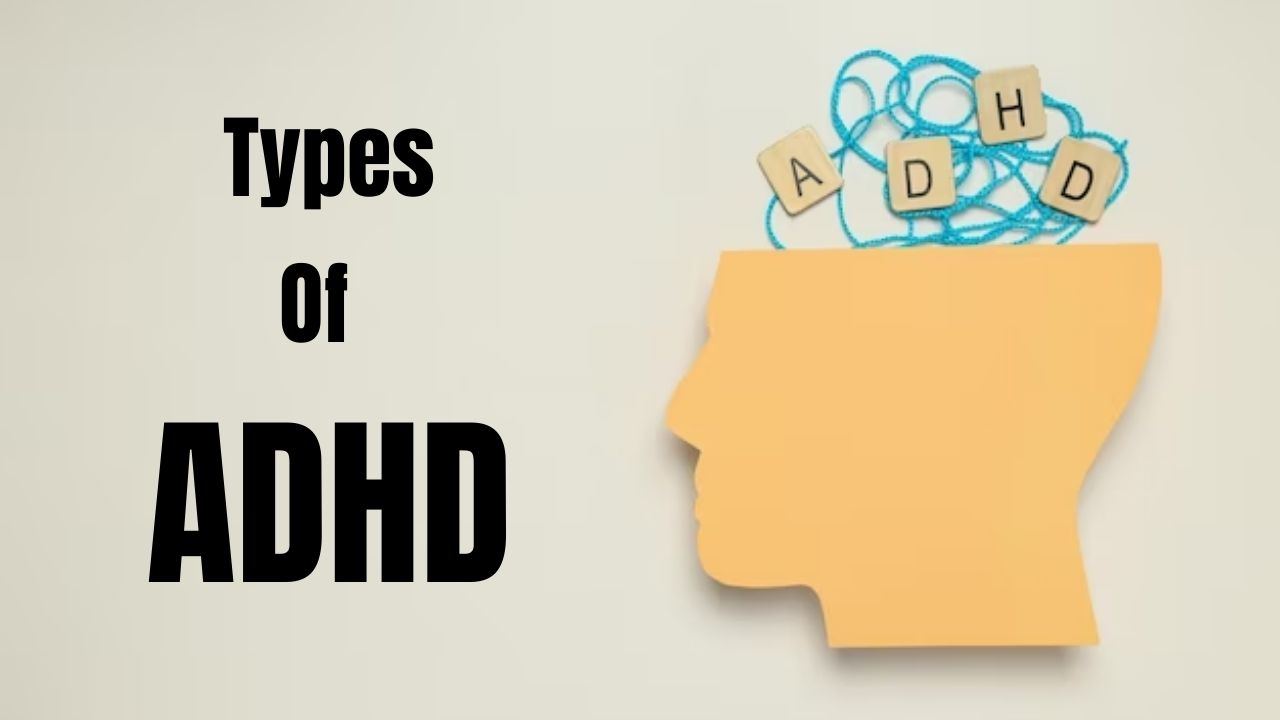
Types of ADHD in Children
1. Inattentive Type (ADHD-I)
Children with the Inattentive Type of ADHD primarily exhibit symptoms related to inattention. This type is sometimes referred to as Attention Deficit Disorder (ADD), though ADD is not a formal diagnosis.
2. Hyperactive-Impulsive Type (ADHD-HI)
Children with the Hyperactive-Impulsive Type of ADHD primarily display symptoms of hyperactivity and impulsivity. These children often struggle with excessive movement and difficulty controlling impulses.
3. Combined Type (ADHD-C)
The Combined Type is characterized by a combination of both inattentive and hyperactive-impulsive symptoms. This is the most common type of ADHD and includes a broader range of behavioral issues.
Symptoms of ADHD in Children
Inattentive Type (ADHD-I)
Children with this type of ADHD often struggle with attention and focus, which can impact their academic performance and daily activities. Common symptoms include:
Difficulty Sustaining Attention: These children often have trouble maintaining focus on tasks or play activities, especially those that require sustained mental effort.
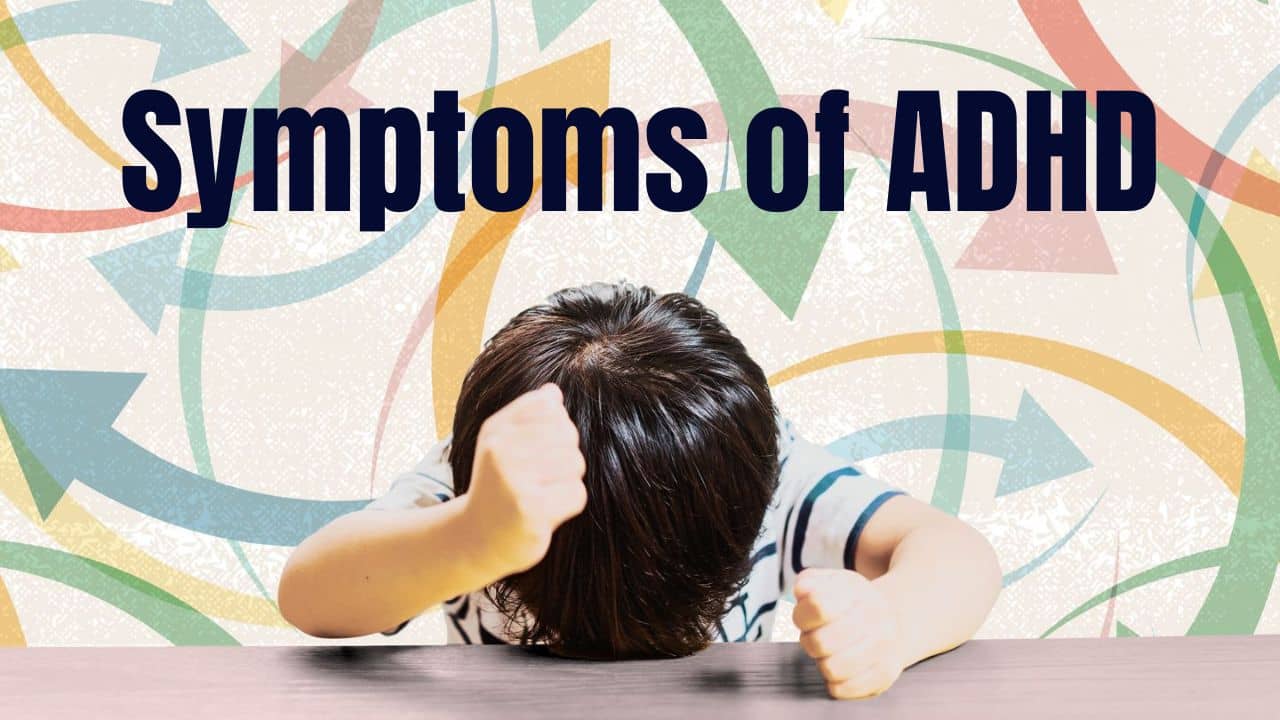
- Careless Mistakes: Frequent errors in schoolwork or other activities due to overlooking details.
- Listening Problems: Appearing not to listen when spoken to directly, often seeming to be in their own world.
- Failure to Follow Instructions: Difficulty following through on instructions, leading to incomplete tasks and assignments.
- Organizational Difficulties: Struggling to keep track of school materials, assignments, and personal belongings.
- Avoidance of Mental Effort: Avoiding tasks that require prolonged mental effort, such as homework or reading.
- Losing Items: Frequently misplacing items needed for tasks, such as books, tools, and toys.
- Easily Distracted: Being easily sidetracked by extraneous stimuli or unrelated thoughts.
- Forgetfulness: Forgetting daily activities and routines, such as chores and appointments.
Hyperactive-Impulsive Type (ADHD-HI)
Children with this type of ADHD exhibit high levels of activity and impulsive behaviors that can disrupt their own and others’ lives. Symptoms include:
- Fidgeting: Constantly moving hands or feet, squirming in seats.
- Inability to Stay Seated: Difficulty remaining seated in situations where sitting is expected, such as in the classroom.
- Excessive Running or Climbing: Engaging in running or climbing in inappropriate situations, often described as being “on the go.”
- Difficulty Playing Quietly: Inability to engage in quiet play or activities.
- Excessive Talking: Talking excessively and at inappropriate times.
- Blurting Out Answers: Answering questions before they are fully asked, interrupting others.
- Impatience: Difficulty waiting for their turn in games or group activities.
- Interrupting: Frequently interrupting conversations or intruding on others’ activities.
Combined Type (ADHD-C)
Children with the Combined Type of ADHD display symptoms of both inattention and hyperactivity-impulsivity. They may experience the full spectrum of symptoms listed above, which can significantly impact various areas of their lives.
Impact of ADHD Symptoms on Children
The symptoms of ADHD can affect multiple aspects of a child’s life, including:
- Academic Performance: Difficulty focusing, following instructions, and completing tasks can lead to poor academic outcomes and frustration.
- Social Interactions: Impulsivity and hyperactivity can make it challenging to form and maintain friendships, leading to social isolation or conflicts.
- Self-Esteem: Repeated difficulties and negative feedback can affect a child’s self-esteem and confidence.
Family Dynamics: ADHD symptoms can create stress and tension within the family, affecting relationships and daily routines.
Managing ADHD Symptoms in Children
Effective management of ADHD involves a combination of strategies tailored to the child’s specific needs:
- Behavioral Interventions: Techniques such as positive reinforcement, structured routines, and clear expectations can help manage behavior.
- Educational Support: Individualized Education Plans (IEPs) or 504 Plans can provide accommodations to support academic success.
- Medication: Stimulant and non-stimulant medications can help regulate symptoms, though their use should be carefully monitored by a healthcare professional.
- Therapy: Cognitive-behavioral therapy (CBT) and social skills training can help children develop coping strategies and improve social interactions.
- Parental Support: Training and support for parents can equip them with strategies to manage their child’s behavior and create a supportive home environment.
ADHD Symptoms in Adults
Attention Deficit Hyperactivity Disorder (ADHD) is often associated with children, but it can persist into adulthood, affecting various aspects of daily life. Adult ADHD can present differently than in children, making it crucial to understand the specific symptoms and challenges faced by adults with the disorder. This comprehensive guide outlines the symptoms of ADHD in adults, their impact, and strategies for management.
Common Symptoms of ADHD in Adults
ADHD in adults is characterized by symptoms of inattention, hyperactivity, and impulsivity. However, the manifestation of these symptoms may differ from how they appear in children.

Inattention
Adults with ADHD often struggle with attention and focus, which can impact their professional and personal lives. Common symptoms of inattention in adults include:
- Difficulty Sustaining Attention: Struggling to focus on tasks, especially those that are monotonous or require prolonged mental effort.
- Poor Time Management: Chronic procrastination, difficulty meeting deadlines, and a tendency to underestimate the time required to complete tasks.
- Disorganization: Challenges in organizing tasks, keeping track of personal belongings, and maintaining an orderly environment.
- Forgetfulness: Frequently forgetting appointments, commitments, and daily activities.
- Distractibility: Being easily distracted by extraneous stimuli, leading to interruptions in tasks and conversations.
- Poor Listening Skills: Difficulty following conversations, often missing key points or appearing not to listen.
Hyperactivity
Hyperactivity in adults may not be as overt as in children but can manifest in more subtle ways. Symptoms include:
- Restlessness: Feeling restless or unable to relax, often described as having an internal sense of restlessness.
- Excessive Talking: Talking excessively, often interrupting others or dominating conversations.
- Fidgeting: Frequent fidgeting, tapping, or moving, even in situations where it may be inappropriate.
- Difficulty Engaging in Quiet Activities: Struggling to engage in leisure activities quietly or calmly.
Impulsivity
Impulsivity in adults can lead to risky behaviors and challenges in self-control. Common impulsive symptoms include:
- Impulsive Decisions: Making hasty decisions without considering the consequences, which can affect finances, relationships, and career.
- Interrupting Others: Frequently interrupting conversations, blurting out thoughts, and difficulty waiting for their turn.
- Emotional Impulsivity: Experiencing mood swings, irritability, and difficulty regulating emotions, leading to conflicts and misunderstandings.
- Poor Impulse Control: Engaging in impulsive behaviors such as overspending, substance abuse, or reckless driving.
Impact of ADHD Symptoms on Adults
The symptoms of ADHD can significantly affect various aspects of an adult’s life, including:

Professional Life
- Job Performance: Difficulty meeting deadlines, poor organizational skills, and challenges in sustaining attention can hinder job performance and career advancement.
- Work Relationships: Impulsivity and difficulty listening can strain relationships with colleagues and supervisors.
Personal Life
- Relationships: Impulsivity, emotional dysregulation, and inattentiveness can lead to misunderstandings and conflicts in relationships with partners, family, and friends.
- Daily Responsibilities: Forgetfulness and disorganization can affect the ability to manage daily responsibilities, such as paying bills, maintaining a household, and keeping appointments.
Mental Health
- Stress and Anxiety: The ongoing struggle to manage ADHD symptoms can lead to increased stress and anxiety.
- Self-Esteem: Chronic difficulties and negative feedback can affect self-esteem and confidence.
Managing ADHD Symptoms in Adults
Effective management of ADHD in adults involves a combination of strategies tailored to individual needs. These strategies can help improve functioning and quality of life.

Medication
Medications such as stimulants (e.g., methylphenidate and amphetamines) and non-stimulants (e.g., atomoxetine) can help manage symptoms. It’s important to work with a healthcare provider to find the most effective medication and dosage.
Behavioral Therapy
Behavioral therapy, including cognitive-behavioral therapy (CBT), can help adults with ADHD develop coping strategies and improve organizational skills. Therapy can also address emotional regulation and impulsivity.
Organizational Strategies
Implementing organizational tools and techniques can help manage symptoms of inattention and disorganization:
- Time Management Tools: Using calendars, planners, and reminder apps to keep track of appointments and deadlines.
- Task Lists: Breaking tasks into smaller, manageable steps and creating to-do lists to stay on track.
- Structured Routines: Establishing routines for daily activities and responsibilities to reduce forgetfulness and improve consistency.
Lifestyle Changes
Certain lifestyle changes can support the management of ADHD symptoms:
- Regular Exercise: Physical activity can improve concentration, reduce stress, and enhance overall well-being.
- Healthy Diet: A balanced diet rich in nutrients can support brain health and improve focus.
- Adequate Sleep: Ensuring sufficient and quality sleep is crucial, as sleep problems can exacerbate ADHD symptoms.
Support Systems
Building a strong support system can provide encouragement and accountability:
- Support Groups: Joining ADHD support groups can offer a sense of community and shared experiences.
- Professional Support: Seeking support from therapists, coaches, and counselors who specialize in ADHD can provide personalized strategies and guidance.
ADHD in adults is a complex condition that affects various aspects of life, from professional performance to personal relationships. Recognizing the symptoms and their impact is the first step toward effective management. With the right combination of medication, therapy, organizational strategies, and lifestyle changes, adults with ADHD can lead successful and fulfilling lives. If you suspect you have ADHD, seeking a professional evaluation and working closely with healthcare providers can help you develop a comprehensive management plan tailored to your needs.
ADHD Causes and Risk Factors
Attention Deficit Hyperactivity Disorder (ADHD) is a complex neurodevelopmental disorder with no single known cause. Instead, it arises from a combination of genetic, environmental, and neurological factors. Understanding these causes and risk factors can help in early identification and effective management of ADHD.
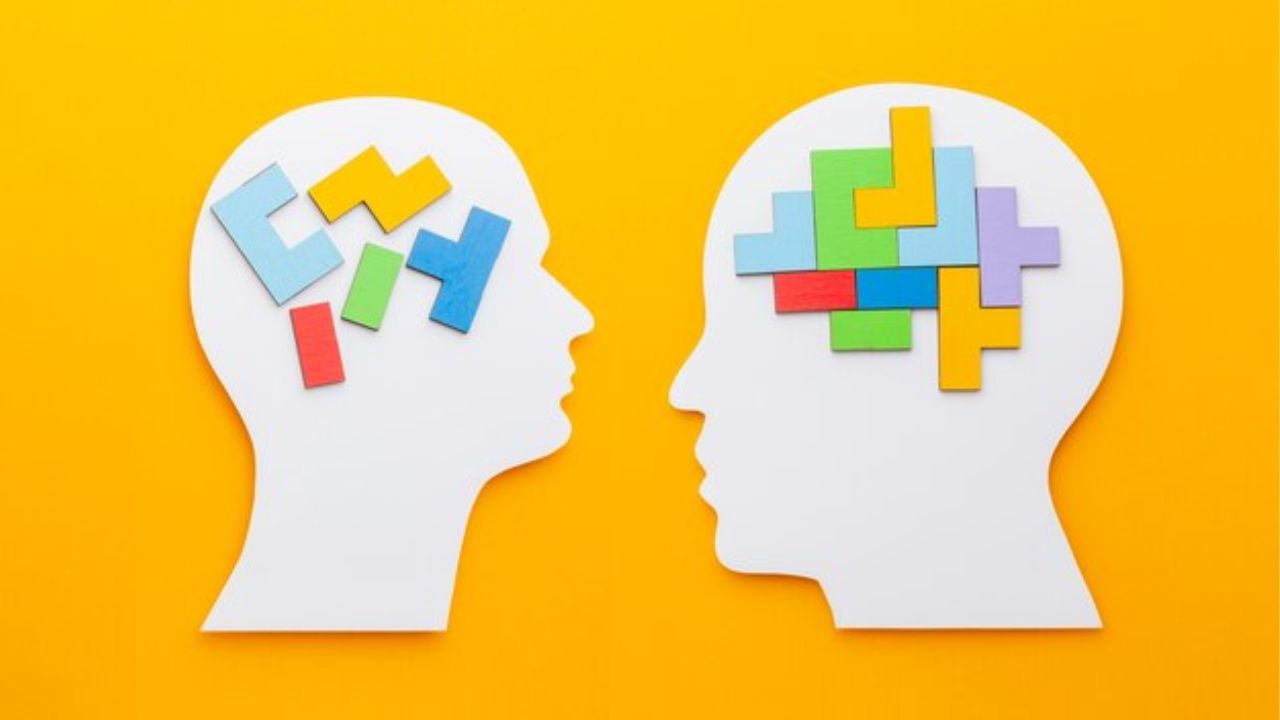
Genetic Factors
1. Family History
ADHD often runs in families, indicating a strong genetic component. Studies show that children with ADHD are more likely to have a parent or sibling with the disorder. Research suggests that multiple genes may be involved, each contributing a small effect to the overall risk of developing ADHD.
2. Twin and Adoption Studies
Twin studies have shown that ADHD is highly heritable, with estimates suggesting that 70-80% of the variability in ADHD symptoms can be attributed to genetic factors. Adoption studies further support the genetic link, showing that biological relatives of children with ADHD are more likely to have the disorder than adoptive relatives.
Neurological Factors
1. Brain Structure and Function
Brain imaging studies have revealed structural and functional differences in the brains of individuals with ADHD. These differences primarily involve areas associated with attention, executive function, and impulse control, including:
- Prefrontal Cortex: Responsible for executive functions like decision-making, attention, and impulse control. Studies have found that this area tends to be smaller or less active in individuals with ADHD.
- Basal Ganglia: Involved in motor control and cognitive functions. Abnormalities in this area can contribute to hyperactivity and impulsivity.
- Cerebellum: Associated with motor control and coordination. Some studies have found reduced size in this region in individuals with ADHD.
Neurotransmitter Imbalance
ADHD has been linked to imbalances in neurotransmitters, particularly dopamine and norepinephrine. These chemicals play a crucial role in transmitting signals in the brain and are essential for regulating attention, behavior, and mood.
Environmental Factors
Prenatal and Perinatal Factors
Certain prenatal and perinatal conditions can increase the risk of developing ADHD:
- Maternal Smoking and Alcohol Use: Exposure to tobacco smoke and alcohol during pregnancy is associated with an increased risk of ADHD in children.
- Drug Use: Use of illicit drugs during pregnancy can adversely affect fetal brain development, increasing the risk of ADHD.
- Premature Birth: Being born prematurely or with a low birth weight is associated with a higher risk of ADHD.
- Pregnancy Complications: Complications during pregnancy or delivery, such as preeclampsia or prolonged labor, may also contribute to the risk.
Exposure to Toxins
Exposure to environmental toxins has been linked to an increased risk of ADHD. These toxins can affect brain development and function:
- Lead Exposure: Lead is a neurotoxin that can affect brain development, and exposure during childhood has been associated with increased ADHD risk.
- Other Environmental Toxins: Pesticides and industrial chemicals have also been implicated in the development of ADHD, although the evidence is less conclusive.
Psychosocial Factors
Family Environment
While family environment alone is not a cause of ADHD, certain family dynamics and psychosocial stressors can exacerbate symptoms:
- Parental Stress: High levels of stress in the family can worsen ADHD symptoms in children.
- Parenting Style: Inconsistent discipline, lack of supervision, and high levels of conflict can contribute to behavioral problems in children with ADHD.
- Socioeconomic Status: Lower socioeconomic status has been associated with a higher prevalence of ADHD, possibly due to increased exposure to environmental stressors and reduced access to healthcare.
Other Risk Factors of ADHD
Gender
ADHD is more commonly diagnosed in boys than girls, with a ratio of approximately 2:1. However, this difference may be partly due to underdiagnosis in girls, who often exhibit less overt hyperactivity and more subtle symptoms of inattention.

Diet and Nutrition
While diet alone does not cause ADHD, certain dietary factors may influence symptoms:
- Nutritional Deficiencies: Deficiencies in essential nutrients, such as omega-3 fatty acids, iron, and zinc, have been linked to increased ADHD symptoms.
- Food Additives: Some studies suggest that artificial food colorings and preservatives may exacerbate hyperactivity in susceptible children.
ADHD Diagnosis and Testing
Diagnosing Attention Deficit Hyperactivity Disorder (ADHD) involves a comprehensive evaluation process that examines various aspects of an individual’s behavior, history, and functioning. Unlike many medical conditions, there is no single test for ADHD. Instead, the diagnosis is based on a combination of clinical interviews, behavioral assessments, and medical examinations. Here is an in-depth look at how ADHD is diagnosed and the types of testing involved.
Steps in Diagnosing ADHD
- Initial Evaluation
- Clinical Interviews
- Behavioral Assessments
- Medical Examination
- Observation and Reports
- Additional Testing
Initial Evaluation
The diagnostic process usually begins with an initial evaluation by a healthcare provider, such as a pediatrician, psychiatrist, psychologist, or a specialized ADHD clinician. This step involves gathering preliminary information about the individual’s symptoms, behavior, and concerns. The healthcare provider will typically ask about the onset, duration, and context of symptoms to determine if further evaluation is warranted.

Clinical Interviews
Structured and Unstructured Interviews
Clinical interviews are a crucial part of the ADHD diagnostic process. These interviews may be structured (using specific diagnostic tools and questionnaires) or unstructured (open-ended questions about symptoms and history).
- Parent/Guardian Interviews: For children, parents or guardians are often interviewed to provide detailed information about the child’s behavior, development, and family history. Questions may cover the child’s academic performance, social interactions, and any observed difficulties.
- Patient Interviews: Older children, adolescents, and adults are interviewed directly to gain insight into their subjective experiences of symptoms. These interviews help identify how symptoms impact daily functioning.
Developmental and Psychiatric History
During the interviews, the clinician will take a detailed developmental and psychiatric history, including:
- Developmental Milestones: Information about early developmental milestones, such as speech and motor skills.
- Past Psychiatric History: Any previous diagnoses, treatments, and family history of psychiatric disorders.
- Social and Academic History: Information about social interactions, academic performance, and any behavioral issues in school or at home.
Behavioral Assessments
Rating Scales and Questionnaires
Behavioral assessments involve standardized rating scales and questionnaires that measure the frequency and severity of ADHD symptoms. These tools are completed by parents, teachers, and the individual (if age-appropriate). Commonly used rating scales include:
- Conners’ Rating Scales: Used to assess ADHD symptoms and related behaviors.
- Vanderbilt ADHD Diagnostic Rating Scale: Used to evaluate ADHD symptoms and associated impairments in children.
- Adult ADHD Self-Report Scale (ASRS): A self-report questionnaire used to screen for ADHD symptoms in adults.
Observations
Direct observation of the individual’s behavior in different settings (such as home, school, or work) can provide valuable information about how symptoms manifest in various environments. Observations can help identify patterns of behavior and the impact of environmental factors on symptoms.
Medical Examination
A thorough medical examination is conducted to rule out other possible causes of symptoms, such as medical conditions or neurological disorders. This examination may include:
- Physical Examination: To check for any physical health issues that could be contributing to symptoms.
- Vision and Hearing Tests: To rule out sensory impairments that could affect attention and behavior.
- Laboratory Tests: In some cases, blood tests may be ordered to check for underlying medical conditions, such as thyroid disorders.
Observation and Reports
Reports from teachers, employers, or other relevant individuals can provide additional insights into the individual’s behavior and functioning in different settings. These reports help corroborate information gathered during interviews and assessments.
Additional Testing
In some cases, additional testing may be conducted to gain a more comprehensive understanding of the individual’s cognitive and psychological functioning. This may include:
- Neuropsychological Testing: These tests assess cognitive functions such as memory, attention, executive function, and problem-solving skills. They can help identify specific cognitive deficits associated with ADHD.
- Psychoeducational Testing: For children and adolescents, psychoeducational testing can evaluate academic skills and identify any learning disabilities that may coexist with ADHD.
Diagnostic Criteria
The diagnosis of ADHD is based on criteria outlined in the Diagnostic and Statistical Manual of Mental Disorders (DSM-5) published by the American Psychiatric Association. To be diagnosed with ADHD, individuals must meet the following criteria:
- Symptoms: Exhibiting six or more symptoms of inattention and/or hyperactivity-impulsivity for at least six months to a degree that is inconsistent with developmental level and negatively impacts social, academic, or occupational activities.
- Age of Onset: Several symptoms must have been present before the age of 12 years.
- Settings: Symptoms must be present in two or more settings (e.g., home, school, work).
- Impairment: Clear evidence that symptoms interfere with or reduce the quality of social, academic, or occupational functioning.
- Exclusion: Symptoms are not better explained by another mental disorder, such as anxiety, depression, or a personality disorder.
How Is ADHD Treated?
Treating Attention Deficit Hyperactivity Disorder (ADHD) involves a comprehensive approach tailored to each individual’s unique needs. Effective treatment plans typically combine medication, behavioral therapy, lifestyle changes, and educational support. The goal is to manage symptoms, improve functioning, and enhance the overall quality of life.

Medication
Medication is often a key component of ADHD treatment, especially for moderate to severe cases. Two main types of medications are used: stimulants and non-stimulants.
Stimulants
Stimulants are the most commonly prescribed medications for ADHD. They work by increasing the levels of certain neurotransmitters (dopamine and norepinephrine) in the brain, which helps improve attention and reduce hyperactive and impulsive behaviors.
- Methylphenidate-Based Stimulants: Includes medications like Ritalin, Concerta, and Metadate.
- Amphetamine-Based Stimulants: Includes medications like Adderall, Vyvanse, and Dexedrine.
Stimulants are generally effective and start working quickly, often within 30 minutes to an hour. However, they can have side effects, including decreased appetite, insomnia, increased heart rate, and anxiety.
Non-Stimulants
Non-stimulant medications are an alternative for those who do not respond well to stimulants or experience significant side effects. These medications can take longer to start working but can be effective in managing ADHD symptoms.
- Atomoxetine (Strattera): A selective norepinephrine reuptake inhibitor (NRI) that helps increase attention and reduce impulsivity and hyperactivity.
- Guanfacine (Intuniv) and Clonidine (Kapvay): Alpha-2 adrenergic agonists that are often used to treat hyperactivity and impulsivity.
Behavioral Therapy
Behavioral therapy is crucial for managing ADHD, especially in children. It helps individuals develop skills to manage their symptoms and improve their functioning in daily life.
Cognitive-Behavioral Therapy (CBT)
CBT is a structured, goal-oriented therapy that helps individuals with ADHD identify and change negative thought patterns and behaviors. It focuses on building practical skills, such as:
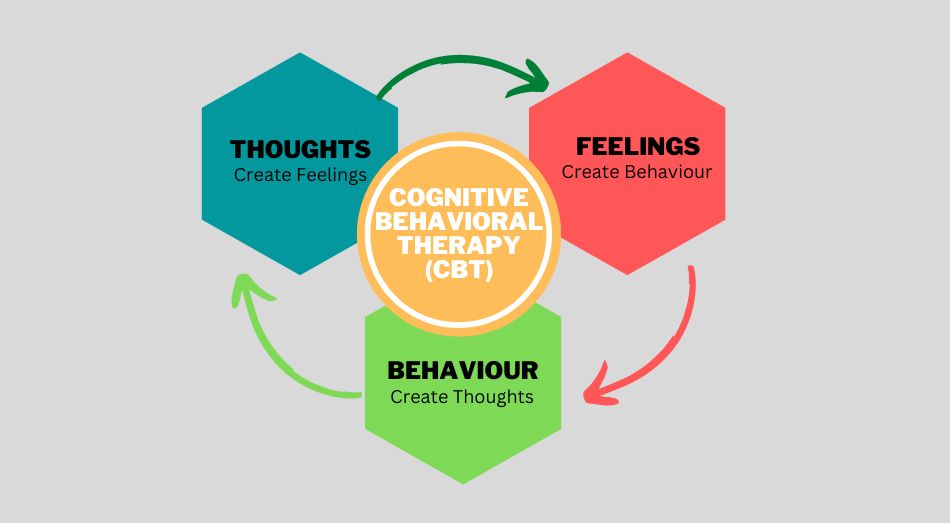
- Time Management: Learning how to prioritize tasks and manage time effectively.
- Organization: Developing strategies to keep track of belongings and maintain an orderly environment.
- Problem-Solving: Enhancing the ability to solve problems and make decisions.
- Impulse Control: Techniques to improve self-control and reduce impulsive behaviors.
Parent Training and Education
For children with ADHD, parent training programs can be highly effective. These programs teach parents strategies to manage their child’s behavior, such as:
- Positive Reinforcement: Encouraging desired behaviors through rewards and praise.
- Consistent Discipline: Implementing consistent consequences for inappropriate behaviors.
- Structured Routines: Establishing predictable daily routines to provide structure and reduce chaos.
Educational Support
Educational support is vital for children with ADHD to succeed academically. Schools can provide accommodations and resources to help manage ADHD symptoms.
Individualized Education Plan (IEP)
An IEP is a customized educational plan designed to meet the specific needs of a child with ADHD. It may include:
- Accommodations: Such as extended time on tests, preferential seating, and breaks during class.
- Specialized Instruction: Tailored teaching strategies to address learning difficulties.
- Support Services: Access to counselors, special education teachers, and other support staff.
504 Plan
A 504 Plan provides accommodations for students with ADHD to ensure they have equal access to education. These plans are less comprehensive than IEPs but can still offer valuable support, such as:

- Classroom Modifications: Adjustments to the learning environment to reduce distractions.
- Assistive Technology: Tools and devices to aid in learning and organization.
Lifestyle Changes
Certain lifestyle changes can support the management of ADHD symptoms and improve overall well-being.
Diet and Nutrition
While diet alone cannot cure ADHD, proper nutrition can support brain health and improve focus.
- Balanced Diet: Eating a diet rich in fruits, vegetables, whole grains, lean proteins, and healthy fats.
- Avoiding Additives: Some studies suggest that artificial food colorings and preservatives may exacerbate hyperactivity in some children.
- Omega-3 Fatty Acids: Found in fish, flaxseeds, and walnuts, these fatty acids may help improve cognitive function.
Exercise
Regular physical activity can have a positive impact on ADHD symptoms by enhancing concentration, reducing stress, and improving mood.
- Aerobic Exercise: Activities like running, swimming, and cycling can help reduce symptoms of hyperactivity and improve attention.
- Mindfulness and Yoga: Practices that promote mindfulness and relaxation can help improve impulse control and emotional regulation.
Sleep
Adequate sleep is essential for managing ADHD symptoms. Poor sleep can exacerbate inattention, hyperactivity, and impulsivity.
- Establishing a Routine: Creating a consistent bedtime routine to promote better sleep habits.
- Limiting Screen Time: Reducing exposure to screens before bedtime to improve sleep quality.
Alternative and Complementary Therapies
In addition to conventional treatments, some individuals with ADHD may benefit from alternative therapies. While these approaches are not a substitute for evidence-based treatments, they can be complementary.
Neurofeedback
Neurofeedback, a type of biofeedback, involves training individuals to regulate their brainwave activity. Some studies suggest it may help improve attention and reduce impulsivity.
Mindfulness Meditation
Mindfulness meditation practices can help individuals with ADHD improve focus, reduce stress, and enhance emotional regulation.
Natural Remedies for ADHD
While conventional treatments such as medication and behavioral therapy are often essential for managing Attention Deficit Hyperactivity Disorder (ADHD), some individuals seek natural remedies to complement these treatments. Natural remedies can include dietary changes, supplements, lifestyle adjustments, and alternative therapies. Although these remedies may not replace traditional treatments, they can help improve symptoms and overall well-being.
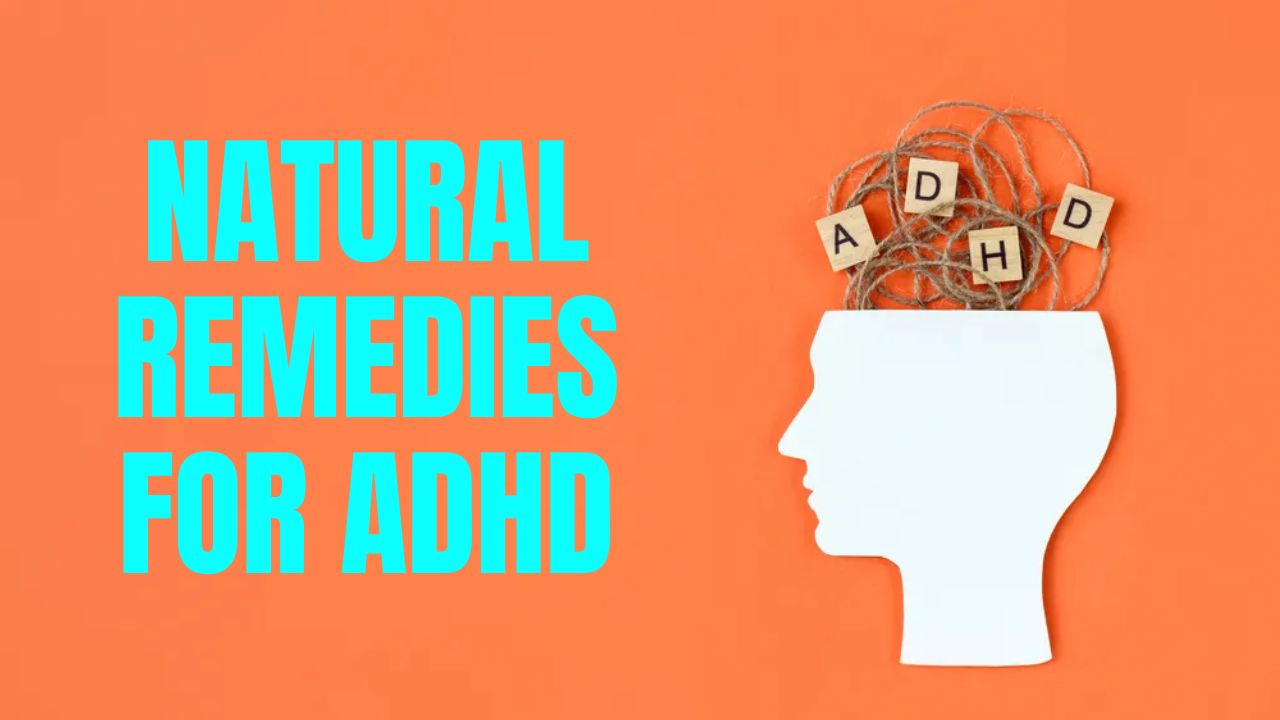
Dietary Changes
Balanced Diet
A balanced diet is crucial for brain health and can support the management of ADHD symptoms. Key components of a healthy diet include:
- Fruits and Vegetables: Rich in vitamins, minerals, and antioxidants that support brain function.
- Whole Grains: Provide steady energy and help maintain stable blood sugar levels.
- Lean Proteins: Essential for the production of neurotransmitters that regulate mood and behavior.
- Healthy Fats: Omega-3 fatty acids found in fish, flaxseeds, and walnuts are particularly beneficial for brain health.
Avoiding Additives and Preservatives
Some studies suggest that artificial food colorings, flavorings, and preservatives may exacerbate ADHD symptoms in some children. Avoiding processed foods and opting for natural, whole foods can help reduce exposure to these additives.
Reducing Sugar Intake
High sugar intake can lead to fluctuations in blood sugar levels, which may affect behavior and attention. Limiting sugary snacks and drinks can help maintain stable energy levels and improve focus.
Supplements
Omega-3 Fatty Acids
Omega-3 fatty acids, particularly eicosapentaenoic acid (EPA) and docosahexaenoic acid (DHA), have been shown to improve attention and reduce hyperactivity and impulsivity in individuals with ADHD. These fatty acids are found in:
- Fish Oil Supplements: Available in capsules or liquid form.
- Foods: Such as salmon, mackerel, sardines, and flaxseeds.
Zinc
Zinc is essential for brain function and neurotransmitter production. Some studies have found that zinc supplementation can help reduce ADHD symptoms, particularly in children who are deficient in this mineral. Zinc-rich foods include:
- Meat and Poultry: Beef, chicken, and turkey.
- Seafood: Oysters and crab.
- Nuts and Seeds: Pumpkin seeds and cashews.
Iron
Iron deficiency has been linked to ADHD symptoms. Ensuring adequate iron intake can help improve cognitive function and behavior. Iron-rich foods include:
- Red Meat: Beef and lamb.
- Legumes: Lentils and beans.
- Leafy Greens: Spinach and kale.
Magnesium
Magnesium is involved in numerous biochemical processes in the brain. Some studies suggest that magnesium supplementation may help reduce hyperactivity and improve attention. Magnesium-rich foods include:
- Nuts and Seeds: Almonds and sunflower seeds.
- Whole Grains: Brown rice and quinoa.
- Leafy Greens: Swiss chard and spinach.
Lifestyle Adjustments
Regular Exercise
Physical activity has been shown to improve attention, reduce hyperactivity, and enhance overall mood. Incorporating regular exercise into daily routines can be beneficial for managing ADHD symptoms.
- Aerobic Exercise: Activities such as running, swimming, and cycling.
- Strength Training: Using weights or resistance bands.
- Mindfulness Activities: Yoga and tai chi combine physical movement with mindfulness, which can help improve focus and reduce stress.
Sleep Hygiene
Adequate and quality sleep is essential for managing ADHD symptoms. Poor sleep can exacerbate inattention, hyperactivity, and impulsivity. Tips for improving sleep hygiene include:
- Consistent Sleep Schedule: Going to bed and waking up at the same time every day.
- Sleep Environment: Creating a quiet, dark, and cool sleeping environment.
- Limiting Screen Time: Avoiding screens at least an hour before bedtime.
Mindfulness and Relaxation Techniques
Mindfulness Meditation
Mindfulness meditation involves paying attention to the present moment without judgment. It can help improve focus, reduce stress, and enhance emotional regulation. Practices include:

- Breathing Exercises: Focusing on the breath to anchor attention.
- Body Scan: Paying attention to physical sensations in different parts of the body.
- Mindful Movement: Practices like yoga or tai chi.
Relaxation Techniques
Relaxation techniques can help reduce stress and improve concentration. These include:
- Progressive Muscle Relaxation: Tensing and then slowly relaxing each muscle group.
- Guided Imagery: Visualizing calming and peaceful scenes.
- Deep Breathing: Taking slow, deep breaths to relax the body and mind.
Herbal Remedies
Ginkgo Biloba
Ginkgo biloba is an herb that is believed to improve cognitive function and attention by increasing blood flow to the brain. Some studies suggest it may help reduce ADHD symptoms, though more research is needed.
Bacopa Monnieri
Bacopa monnieri, also known as Brahmi, is an herb used in traditional medicine to enhance cognitive function. It may help improve attention, memory, and impulse control.
Rhodiola Rosea
Rhodiola rosea is an adaptogenic herb that helps the body manage stress. It may help improve focus and reduce fatigue, which can be beneficial for individuals with ADHD.
Natural remedies can provide complementary support for managing ADHD symptoms alongside conventional treatments. Dietary changes, supplements, lifestyle adjustments, mindfulness practices, and herbal remedies can all play a role in improving focus, reducing hyperactivity, and enhancing overall well-being. However, it is essential to consult with a healthcare professional before starting any new treatment, especially for children, to ensure safety and effectiveness.
| Feature | ADHD (Attention Deficit Hyperactivity Disorder) | ADD (Attention Deficit Disorder) |
| Definition | A neurodevelopmental disorder characterized by inattention, hyperactivity, and impulsivity. | A former term used to describe individuals with inattention without hyperactivity. Now considered a subtype of ADHD. |
| Symptoms | Inattention, hyperactivity, impulsivity. | Primarily inattention. |
| Subtypes | Combined Type, Predominantly Inattentive Type, Predominantly Hyperactive-Impulsive Type. | Predominantly Inattentive Type (part of ADHD). |
| Inattention | Yes | Yes |
| Hyperactivity | Yes | No |
| Impulsivity | Yes | No or minimal |
| Prevalence | More common in boys | Equally common in boys and girls |
| Diagnosis Criteria | Based on DSM-5 criteria, symptoms present in two or more settings, significant impairment. | Based on DSM-5 criteria under ADHD-Predominantly Inattentive Type. |
| Treatment Options | Medications (stimulants and non-stimulants), behavioral therapy, lifestyle changes, educational support. | Similar to ADHD, focusing more on attention-enhancing strategies. |
| Common Medications | Stimulants (e.g., Adderall, Ritalin), non-stimulants (e.g., Strattera). | Stimulants (e.g., Adderall, Ritalin), non-stimulants (e.g., Strattera). |
| Behavioral Therapy | Often includes behavioral interventions targeting both hyperactivity and inattention. | Focuses on strategies to manage inattention. |
| Impact on Daily Life | Can affect academic performance, social interactions, occupational functioning. | Primarily affects academic performance and organizational skills. |
| Common Misconceptions | Often perceived as only affecting children, but it persists into adulthood. | Often thought to be less severe due to lack of hyperactivity. |
ADHD encompasses a broader range of symptoms, including inattention, hyperactivity, and impulsivity. It includes three subtypes: Combined Type, Predominantly Inattentive Type, and Predominantly Hyperactive-Impulsive Type.
ADD is an outdated term now included under the ADHD umbrella as the Predominantly Inattentive Type, focusing primarily on inattention without hyperactivity.
Understanding these distinctions helps in the accurate diagnosis and treatment of individuals experiencing attention-related difficulties.
How Can Parents Help Children with ADHD?
Parents play a crucial role in supporting and managing children with Attention Deficit Hyperactivity Disorder (ADHD). Effective strategies involve creating a structured environment, using positive reinforcement, maintaining open communication with educators, and seeking professional help when necessary. Here are some practical ways parents can help their children thrive.

Establishing Structure and Routine
Consistent Daily Schedule
- Set Regular Times: Establish fixed times for waking up, meals, homework, play, and bedtime. Consistency helps children with ADHD understand expectations and reduces anxiety.
- Visual Schedules: Use charts or calendars to visually display daily routines, helping children remember their tasks and stay organized.
Clear and Simple Instructions
- Break Down Tasks: Divide tasks into small, manageable steps. This makes it easier for children to follow and complete them without feeling overwhelmed.
- Written Reminders: Use notes, lists, or visual cues to help children remember their responsibilities and upcoming activities.
Positive Reinforcement and Discipline
Reward System
- Incentives for Good Behavior: Implement a reward system to reinforce positive behaviors. Use stickers, tokens, or points that can be exchanged for privileges or treats.
- Immediate Feedback: Provide immediate and specific praise for positive actions to reinforce good behavior.
Consistent Discipline
- Clear Consequences: Establish clear and consistent consequences for inappropriate behavior. Ensure that children understand the rules and the repercussions of breaking them.
- Positive Time-Outs: Use time-outs as a way for children to calm down and regain control, rather than as a punishment.
Supporting Academic Success
Communication with Teachers
- Regular Updates: Maintain regular communication with your child’s teachers to monitor progress and address any concerns promptly.
- Collaborative Approach: Work with teachers to develop individualized strategies and accommodations that support your child’s learning needs.
Homework Strategies
- Quiet Workspace: Create a designated, distraction-free area for homework and study.
- Structured Homework Time: Set a specific time for homework each day and break study sessions into short, focused intervals with breaks in between.
Encouraging Healthy Lifestyle Habits
Balanced Diet
- Nutritious Meals: Provide a balanced diet rich in fruits, vegetables, whole grains, lean proteins, and healthy fats. Avoid excessive sugar and artificial additives.
- Regular Meal Times: Ensure regular meal and snack times to maintain stable energy levels throughout the day.
Physical Activity
- Regular Exercise: Encourage daily physical activity to help reduce hyperactivity and improve focus. Activities like running, swimming, and team sports can be beneficial.
- Family Activities: Engage in physical activities together as a family, such as hiking, biking, or playing sports.
Adequate Sleep
- Consistent Bedtime Routine: Establish a calming bedtime routine and ensure your child gets sufficient sleep each night.
- Sleep-Friendly Environment: Create a sleep-conducive environment by keeping the bedroom cool, dark, and quiet.
Building Social Skills
Playdates and Social Activities
- Structured Playdates: Arrange supervised playdates with peers to help your child develop social skills in a controlled environment.
- Group Activities: Encourage participation in group activities like sports, clubs, or hobbies to foster teamwork and social interaction.
Social Skills Training
- Role-Playing: Practice social scenarios through role-playing to teach appropriate responses and behaviors.
- Positive Reinforcement: Praise and reinforce positive social interactions to build your child’s confidence.
Seeking Professional Help
Behavioral Therapy
- Cognitive Behavioral Therapy (CBT): CBT can help children with ADHD develop coping strategies, improve impulse control, and manage their emotions.
- Parent Training Programs: These programs teach parents strategies to effectively manage their child’s behavior and support their development.
Medication Management
Consulting a Healthcare Professional: If medication is part of your child’s treatment plan, work closely with a healthcare provider to monitor effectiveness and manage any side effects.
Supporting Emotional Well-Being
Open Communication
- Listen Actively: Encourage open communication by actively listening to your child’s feelings and concerns.
- Express Empathy: Show understanding and empathy towards your child’s struggles and achievements.
Boosting Self-Esteem
- Highlight Strengths: Focus on your child’s strengths and interests to build their self-esteem.
- Celebrate Achievements: Celebrate both small and large achievements to foster a sense of accomplishment and motivation.
ADHD and Diet: How Nutrition Can Help Manage Symptoms
Diet and nutrition play a significant role in the overall health and well-being of individuals with Attention Deficit Hyperactivity Disorder (ADHD). While diet alone cannot cure ADHD, certain nutritional strategies can help manage symptoms, improve focus, and support brain function. Here’s an in-depth look at how diet can affect ADHD and practical dietary recommendations.

Key Nutritional Components
Balanced Diet
A balanced diet provides essential nutrients that support brain health and overall well-being. Important components of a balanced diet for individuals with ADHD include:
- Fruits and Vegetables: Rich in vitamins, minerals, and antioxidants that support brain function and reduce oxidative stress.
- Whole Grains: Provide steady energy and help maintain stable blood sugar levels, which can influence mood and behavior.
- Lean Proteins: Essential for the production of neurotransmitters that regulate mood and behavior. Sources include meat, poultry, fish, beans, and legumes.
- Healthy Fats: Omega-3 fatty acids, in particular, are crucial for brain health and can help improve attention and cognitive function.
Omega-3 Fatty Acids
Omega-3 fatty acids are essential fats that have been shown to benefit individuals with ADHD. They are found in:
- Fish: Salmon, mackerel, sardines, and trout.
- Seeds: Flaxseeds and chia seeds.
- Nuts: Walnuts.
- Fish Oil Supplements: These can provide a concentrated source of omega-3s if dietary intake is insufficient.
Studies suggest that omega-3 fatty acids can help improve attention, reduce hyperactivity, and enhance cognitive function in individuals with ADHD.
Protein
Adequate protein intake is important for maintaining stable blood sugar levels and supporting neurotransmitter function. Good sources of protein include:
- Meat and Poultry: Chicken, turkey, lean beef, and pork.
- Fish: Salmon, tuna, and cod.
- Eggs: A versatile and nutrient-rich protein source.
- Legumes: Beans, lentils, and chickpeas.
- Dairy Products: Milk, cheese, and yogurt.
Including protein in every meal and snack can help stabilize energy levels and improve focus.
Foods and Substances to Avoid
Artificial Additives
Artificial food colorings, flavorings, and preservatives have been linked to increased hyperactivity and other ADHD symptoms in some children. Common additives to avoid include:
- Food Colorings: Such as Red 40, Yellow 5, and Blue 1.
- Preservatives: Like sodium benzoate and BHA (butylated hydroxyanisole).
Reading food labels and choosing natural, whole foods can help reduce exposure to these additives.
Sugary Foods and Beverages
High sugar intake can lead to fluctuations in blood sugar levels, which may affect behavior and attention. To maintain stable blood sugar levels, it is advisable to limit:
- Sugary Snacks: Candy, cookies, and pastries.
- Sugary Beverages: Sodas, fruit juices, and energy drinks.
- Refined Carbohydrates: White bread, white rice, and sugary cereals.
Opting for complex carbohydrates, such as whole grains, and combining them with protein and healthy fats can help stabilize blood sugar levels.
Dietary Patterns and Meal Planning
Regular Meal Times
Eating at regular intervals helps maintain stable energy levels and prevents blood sugar crashes that can affect mood and behavior. Aim for:
- Consistent Meal Times: Breakfast, lunch, and dinner at the same times each day.
- Healthy Snacks: Nutritious snacks between meals to maintain energy levels.
Hydration
Staying hydrated is important for cognitive function and overall health. Encourage drinking:
- Water: The best choice for hydration.
- Herbal Teas: Unsweetened teas can be a good alternative to sugary drinks.
Specific Diets for ADHD
The Feingold Diet
The Feingold Diet eliminates artificial food colorings, flavorings, and preservatives, as well as certain natural salicylates found in foods like apples, berries, and tomatoes. Some families report improvements in ADHD symptoms with this diet, although scientific evidence is mixed.
The Mediterranean Diet
The Mediterranean Diet, rich in fruits, vegetables, whole grains, fish, and healthy fats, has been associated with improved cognitive function and reduced ADHD symptoms. Key components include:
- Fruits and Vegetables: Fresh, seasonal produce.
- Whole Grains: Whole wheat, oats, barley, and brown rice.
- Healthy Fats: Olive oil, nuts, and seeds.
- Fish: Regular consumption of fatty fish like salmon and sardines.
- Lean Proteins: Poultry, eggs, and legumes.
Supplementation
Omega-3 Supplements
Fish oil supplements can be an effective way to increase omega-3 intake, especially if dietary sources are limited. Look for supplements containing both EPA (eicosapentaenoic acid) and DHA (docosahexaenoic acid).
Multivitamins
A daily multivitamin can help ensure that children with ADHD receive adequate amounts of essential vitamins and minerals, particularly if they are picky eaters or have dietary restrictions.
Magnesium and Zinc
Magnesium and zinc supplements may help improve ADHD symptoms, especially if there is a deficiency. Foods rich in these minerals include:
- Magnesium: Leafy greens, nuts, seeds, and whole grains.
- Zinc: Meat, shellfish, legumes, and seeds.
Diet and nutrition play an important role in managing ADHD symptoms. While dietary changes and supplementation can support traditional treatments, it is essential to consult with a healthcare professional or a registered dietitian before making significant changes to ensure a balanced and individualized approach. A healthy, balanced diet rich in essential nutrients can help improve attention, behavior, and overall well-being in individuals with ADHD.
How to Know If You Have ADHD: Signs, Symptoms, and Diagnosis
Attention Deficit Hyperactivity Disorder (ADHD) is a neurodevelopmental disorder that can affect both children and adults. It’s characterized by symptoms of inattention, hyperactivity, and impulsivity that interfere with daily functioning and development. If you suspect you might have ADHD, understanding the signs and seeking a professional diagnosis are crucial steps. Here’s a guide to help you recognize the symptoms and understand the diagnostic process.

Recognizing the Symptoms
ADHD symptoms can vary widely between individuals and are generally categorized into two types: inattentive symptoms and hyperactive-impulsive symptoms. Some people exhibit symptoms of both types, which is known as combined ADHD.
Inattentive Symptoms
- Difficulty Sustaining Attention: Frequent lack of attention in tasks or activities, including work, school, or conversations.
- Careless Mistakes: Making careless errors in schoolwork, work, or other activities due to inattention to details.
- Avoidance of Tasks Requiring Sustained Mental Effort: Avoiding or being reluctant to engage in tasks that require prolonged mental effort, such as schoolwork or completing forms.
- Poor Organization: Difficulty organizing tasks and activities, resulting in messy work and poor time management.
- Easily Distracted: Being easily distracted by extraneous stimuli, including unrelated thoughts.
- Forgetfulness: Frequently forgetting daily tasks, such as chores, appointments, or returning calls.
- Losing Items: Regularly misplacing items necessary for tasks and activities, like keys, glasses, or school materials.
Hyperactive-Impulsive Symptoms
- Fidgeting: Frequent fidgeting or tapping of hands or feet, or squirming in seat.
- Inability to Stay Seated: Difficulty remaining seated in situations where it is expected, like in class or meetings.
- Excessive Talking: Talking excessively without considering the social context or interrupting others.
- Difficulty Waiting Turn: Impatience and difficulty waiting for one’s turn in queues or during activities.
- Interrupting or Intruding: Frequently interrupting others’ conversations or activities.
- Restlessness: Often feeling restless or “on the go,” acting as if “driven by a motor.”
Self-Assessment and Screening Tools
There are various self-assessment questionnaires and screening tools available online that can help you evaluate whether you might have ADHD. These tools are not diagnostic but can provide insight into whether you should seek a professional evaluation. Examples include:
- Adult ADHD Self-Report Scale (ASRS): A widely used screening tool developed by the World Health Organization.
- Conners’ Adult ADHD Rating Scales (CAARS): Another tool that can help identify symptoms of ADHD in adults.
Seeking a Professional Diagnosis
If you recognize several of the symptoms listed above in yourself and they significantly interfere with your daily life, it’s important to seek a professional evaluation. Here’s what the diagnostic process typically involves:
Initial Consultation
- Primary Care Physician: Start with your primary care physician, who can provide an initial assessment and refer you to a specialist if necessary.
- Mental Health Professional: A psychiatrist, psychologist, or other mental health professionals who specialize in ADHD can conduct a thorough evaluation.
Comprehensive Evaluation
A comprehensive ADHD evaluation usually includes the following components:
- Clinical Interview: The specialist will conduct a detailed interview to gather information about your symptoms, medical history, family history, and how the symptoms affect your daily life.
- Behavioral Questionnaires: You may be asked to fill out questionnaires or rating scales that measure ADHD symptoms.
- Observation and Input from Others: Input from family members, teachers, or colleagues who have observed your behavior can provide valuable insights.
- Rule Out Other Conditions: The clinician will rule out other conditions that can mimic ADHD symptoms, such as anxiety, depression, learning disabilities, or thyroid problems.
Diagnostic Criteria
To diagnose ADHD, professionals use the criteria outlined in the Diagnostic and Statistical Manual of Mental Disorders (DSM-5). According to the DSM-5, a person must exhibit at least six symptoms of inattention and/or hyperactivity-impulsivity for at least six months to a degree that is inconsistent with their developmental level and that negatively impacts social, academic, or occupational activities. For adults, the number of symptoms required may be fewer, and the impact on daily functioning is a critical consideration.
After Diagnosis: What Next?
If you are diagnosed with ADHD, several treatment options can help manage symptoms and improve quality of life. These include:
- Medication: Stimulant and non-stimulant medications can help manage symptoms.
- Behavioral Therapy: Cognitive-behavioral therapy (CBT) and other forms of therapy can help develop coping strategies and improve organizational skills.
- Lifestyle Changes: Regular exercise, a balanced diet, and adequate sleep can support overall brain health and symptom management.
- Support Systems: Joining support groups or seeking support from family and friends can provide encouragement and practical advice.
How to Help a Child with ADHD: Strategies for Parents
Supporting a child with Attention Deficit Hyperactivity Disorder (ADHD) involves a combination of structured routines, positive reinforcement, effective communication with educators, and professional guidance. Here are practical strategies parents can implement to help their child thrive.

1. Establish Structure and Routine
Consistent Daily Schedule
- Set Regular Times: Establish fixed times for waking up, meals, homework, play, and bedtime. Consistency helps children with ADHD understand expectations and reduces anxiety.
- Visual Schedules: Use charts or calendars to visually display daily routines, helping children remember their tasks and stay organized.
Clear and Simple Instructions
- Break Down Tasks: Divide tasks into small, manageable steps. This makes it easier for children to follow and complete them without feeling overwhelmed.
- Written Reminders: Use notes, lists, or visual cues to help children remember their responsibilities and upcoming activities.
2. Use Positive Reinforcement and Effective Discipline
Reward System
- Incentives for Good Behavior: Implement a reward system to reinforce positive behaviors. Use stickers, tokens, or points that can be exchanged for privileges or treats.
- Immediate Feedback: Provide immediate and specific praise for positive actions to reinforce good behavior.
Consistent Discipline
- Clear Consequences: Establish clear and consistent consequences for inappropriate behavior. Ensure that children understand the rules and the repercussions of breaking them.
- Positive Time-Outs: Use time-outs as a way for children to calm down and regain control, rather than as a punishment.
3. Support Academic Success
Communication with Teachers
- Regular Updates: Maintain regular communication with your child’s teachers to monitor progress and address any concerns promptly.
- Collaborative Approach: Work with teachers to develop individualized strategies and accommodations that support your child’s learning needs.
Homework Strategies
- Quiet Workspace: Create a designated, distraction-free area for homework and study.
- Structured Homework Time: Set a specific time for homework each day and break study sessions into short, focused intervals with breaks in between.
4. Encourage Healthy Lifestyle Habits
Balanced Diet
- Nutritious Meals: Provide a balanced diet rich in fruits, vegetables, whole grains, lean proteins, and healthy fats. Avoid excessive sugar and artificial additives.
- Regular Meal Times: Ensure regular meal and snack times to maintain stable energy levels throughout the day.
Physical Activity
- Regular Exercise: Encourage daily physical activity to help reduce hyperactivity and improve focus. Activities like running, swimming, and team sports can be beneficial.
- Family Activities: Engage in physical activities together as a family, such as hiking, biking, or playing sports.
Adequate Sleep
- Consistent Bedtime Routine: Establish a calming bedtime routine and ensure your child gets sufficient sleep each night.
- Sleep-Friendly Environment: Create a sleep-conducive environment by keeping the bedroom cool, dark, and quiet.
5. Build Social Skills
Playdates and Social Activities
- Structured Playdates: Arrange supervised playdates with peers to help your child develop social skills in a controlled environment.
- Group Activities: Encourage participation in group activities like sports, clubs, or hobbies to foster teamwork and social interaction.
Social Skills Training
- Role-Playing: Practice social scenarios through role-playing to teach appropriate responses and behaviors.
- Positive Reinforcement: Praise and reinforce positive social interactions to build your child’s confidence.
6. Seek Professional Help
Behavioral Therapy
- Cognitive Behavioral Therapy (CBT): CBT can help children with ADHD develop coping strategies, improve impulse control, and manage their emotions.
- Parent Training Programs: These programs teach parents strategies to effectively manage their child’s behavior and support their development.
Medication Management
Consulting a Healthcare Professional: If medication is part of your child’s treatment plan, work closely with a healthcare provider to monitor effectiveness and manage any side effects.
7. Support Emotional Well-Being
Open Communication
- Listen Actively: Encourage open communication by actively listening to your child’s feelings and concerns.
- Express Empathy: Show understanding and empathy towards your child’s struggles and achievements.
Boosting Self-Esteem
- Highlight Strengths: Focus on your child’s strengths and interests to build their self-esteem.
- Celebrate Achievements: Celebrate both small and large achievements to foster a sense of accomplishment and motivation.
Living with ADHD: Strategies and Tips for a Fulfilling Life
Living with Attention Deficit Hyperactivity Disorder (ADHD) presents unique challenges that can impact various aspects of daily life, from personal relationships and work performance to overall well-being. However, with the right strategies and support, individuals with ADHD can lead fulfilling and productive lives. This guide covers practical tips and techniques to help manage ADHD symptoms effectively.

Understanding ADHD
ADHD is a neurodevelopmental disorder characterized by symptoms of inattention, hyperactivity, and impulsivity. These symptoms can vary in intensity and can significantly impact an individual’s ability to function in daily life. It’s important to recognize that ADHD affects both children and adults, and effective management requires a comprehensive approach.
Strategies for Daily Living
1. Organization and Time Management
Use Tools and Technology
- Digital Calendars: Utilize digital calendars to keep track of appointments, deadlines, and events. Set reminders to ensure you stay on schedule.
- Task Management Apps: Use apps like Todoist, Trello, or Evernote to organize tasks and create to-do lists.
Create a Routine
- Daily Schedule: Establish a consistent daily routine to provide structure. Include specific times for waking up, meals, work, exercise, and relaxation.
- Break Tasks into Steps: Divide larger tasks into smaller, manageable steps. This approach makes tasks less overwhelming and helps maintain focus.
Declutter Your Space
Organized Environment: Keep your living and work spaces organized and free of clutter. Use storage solutions like bins, shelves, and labeled containers to keep items in their designated places.
Minimal Distractions: Create a distraction-free environment for work or study by minimizing background noise and keeping your workspace tidy.
2. Managing Symptoms
Healthy Lifestyle Habits
- Balanced Diet: Eat a nutritious diet rich in fruits, vegetables, whole grains, lean proteins, and healthy fats. Avoid excessive sugar and processed foods.
- Regular Exercise: Engage in regular physical activity to help manage hyperactivity and improve concentration. Activities like running, swimming, yoga, and team sports can be beneficial.
- Adequate Sleep: Establish a regular sleep schedule and create a calming bedtime routine to ensure sufficient rest.
Mindfulness and Relaxation Techniques
- Meditation: Practice mindfulness meditation to improve focus and reduce stress. Apps like Headspace and Calm offer guided meditation sessions.
- Deep Breathing: Use deep breathing exercises to calm your mind and reduce impulsivity. Techniques like the 4-7-8 breathing method can be helpful.
Professional Support
- Therapy: Cognitive-behavioral therapy (CBT) can help develop coping strategies, improve organizational skills, and manage emotional challenges.
- Medication: Consult with a healthcare provider to determine if medication is appropriate. Medications such as stimulants and non-stimulants can help manage ADHD symptoms.
Navigating Personal Relationships
1. Communication
- Open Dialogue: Maintain open and honest communication with family, friends, and colleagues about your ADHD. Explaining your challenges can foster understanding and support.
- Active Listening: Practice active listening techniques to improve interactions. This involves fully concentrating, understanding, responding, and remembering what the other person says.
2. Setting Boundaries
- Clear Expectations: Set clear boundaries and expectations in your relationships. This helps prevent misunderstandings and reduces stress.
- Assertiveness: Learn to assert your needs and limits respectfully. This is crucial for maintaining healthy relationships and managing your time effectively.
Succeeding at Work
1. Workplace Strategies
- Task Prioritization: Prioritize tasks based on importance and deadlines. Use the Eisenhower Matrix to categorize tasks into urgent, non-urgent, important, and less important.
- Breaks: Take regular breaks to avoid burnout and maintain productivity. Short, frequent breaks can help refresh your mind.
2. Seeking Accommodations
- Reasonable Adjustments: Request reasonable adjustments or accommodations at work. This might include flexible working hours, a quiet workspace, or task management tools.
- Support Networks: Join support groups or networks for individuals with ADHD. Sharing experiences and tips with others can provide valuable insights and encouragement.
Educational Success
1. Study Techniques
- Study Environment: Create a quiet, organized study space free from distractions.
- Active Learning: Engage in active learning techniques, such as summarizing information, teaching others, or using mnemonic devices.
2. Academic Support
- Tutoring: Seek tutoring or academic coaching to address specific learning challenges.
- School Accommodations: Work with educators to develop individualized education plans (IEPs) or 504 plans that provide necessary accommodations.
Emotional and Mental Well-Being
1. Emotional Regulation
- Journaling: Keep a journal to express your thoughts and emotions. This can help you process feelings and identify patterns.
- Support Groups: Participate in ADHD support groups to share experiences and gain support from others facing similar challenges.
2. Self-Care
- Relaxation Activities: Engage in activities that promote relaxation and well-being, such as reading, listening to music, or spending time in nature.
- Self-Compassion: Practice self-compassion by acknowledging your challenges without self-judgment. Celebrate your achievements, no matter how small.
Myths and Misconceptions about ADHD
Attention Deficit Hyperactivity Disorder (ADHD) is one of the most commonly misunderstood mental health conditions. Numerous myths and misconceptions surround ADHD, contributing to stigma and misinformation. Dispelling these myths is essential for fostering a more accurate understanding and supportive environment for individuals with ADHD. Here are some of the most prevalent myths and the truths that counter them.
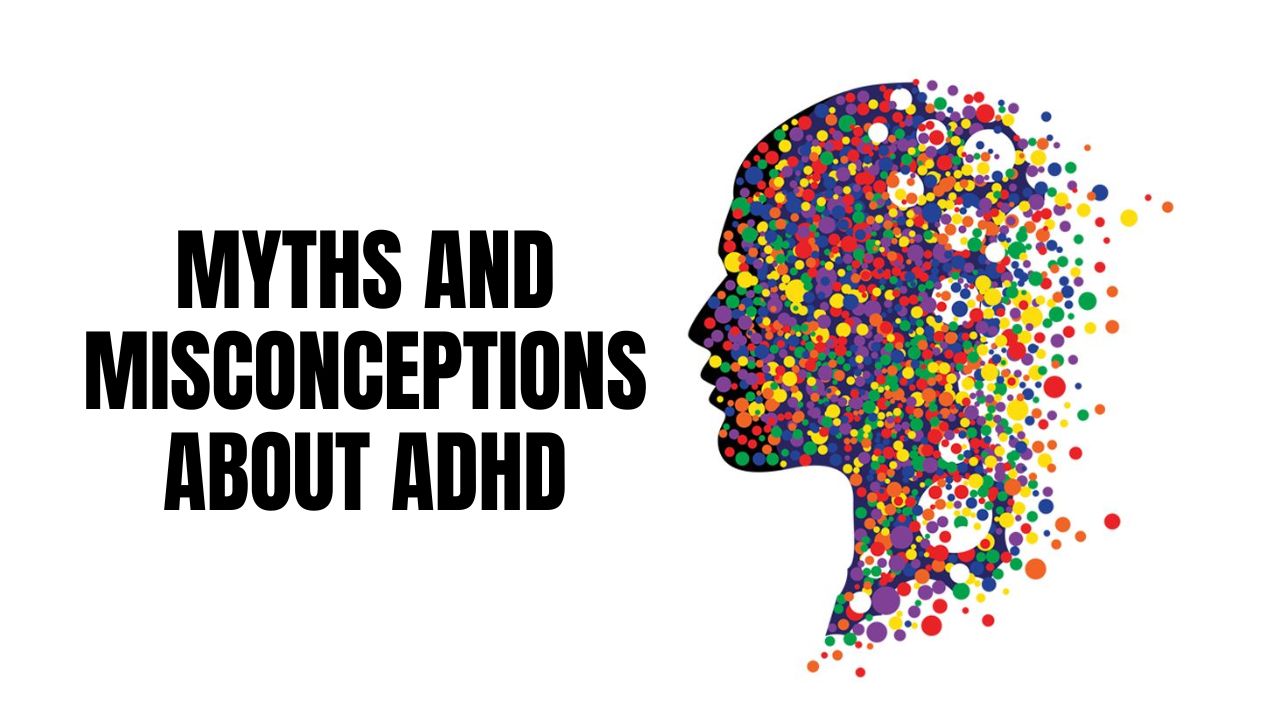
Myth 1: ADHD Isn’t a Real Medical Condition
Truth: ADHD is a well-documented neurodevelopmental disorder recognized by major medical institutions, including the American Psychiatric Association (APA) and the World Health Organization (WHO). It is included in the Diagnostic and Statistical Manual of Mental Disorders (DSM-5) and the International Classification of Diseases (ICD-11).
Myth 2: ADHD Only Affects Children
Truth: Although ADHD is often diagnosed in childhood, it can persist into adulthood. Many adults with ADHD were either diagnosed in childhood or remain undiagnosed. ADHD symptoms can change over time but often continue to impact daily functioning throughout a person’s life.
Myth 3: ADHD is Just an Excuse for Laziness
Truth: ADHD is characterized by genuine neurological differences that affect attention, impulse control, and executive functioning. Individuals with ADHD often struggle with tasks that require sustained mental effort and organization, but this is not due to laziness. They frequently have to work much harder to achieve the same outcomes as their peers without ADHD.
Myth 4: ADHD is Caused by Poor Parenting
Truth: ADHD is not caused by parenting styles. It is a complex condition with genetic, neurological, and environmental factors. While a supportive environment can help manage symptoms, it does not cause or cure the disorder.
Myth 5: All Children with ADHD Are Hyperactive
Truth: ADHD presents in different ways, and not all individuals with ADHD are hyperactive. ADHD can be predominantly inattentive, predominantly hyperactive-impulsive, or combined. Inattentive ADHD, in particular, may not involve hyperactivity at all but still includes significant challenges with attention and focus.
Myth 6: ADHD Can Be Outgrown
Truth: ADHD symptoms can change and may diminish with age, but many individuals continue to experience symptoms into adulthood. Effective management and coping strategies can help, but ADHD typically remains a lifelong condition.
Myth 7: ADHD Medications Are Addictive
Truth: When prescribed and monitored by a healthcare professional, ADHD medications, such as stimulants, are generally safe and effective. These medications help regulate attention and behavior in individuals with ADHD and are not considered addictive when used as directed. However, misuse of these medications can lead to dependency issues.
Myth 8: ADHD Only Affects Boys
Truth: ADHD affects both boys and girls, but it is often diagnosed more frequently in boys. This discrepancy may be due to differences in how symptoms present. Boys are more likely to display hyperactive and impulsive behaviors, while girls may exhibit inattentive symptoms that are less disruptive and more easily overlooked.
Myth 9: Diet and Lack of Exercise Cause ADHD
Truth: While diet and exercise can influence overall health and well-being, they do not cause ADHD. However, a balanced diet and regular physical activity can help manage symptoms and improve overall functioning.
Myth 10: ADHD Means Low Intelligence
Truth: ADHD is not related to intelligence. Individuals with ADHD can have a wide range of intellectual abilities. Many people with ADHD are highly intelligent and capable but may struggle with tasks that require organization, focus, and sustained effort due to the disorder’s impact on executive functioning.
Myth 11: ADHD Can Be Cured
Truth: There is currently no cure for ADHD. However, with appropriate treatment, including medication, therapy, lifestyle changes, and support, individuals with ADHD can effectively manage their symptoms and lead successful lives.
Conclusion
ADHD is a complex and multifaceted disorder that requires a comprehensive approach to diagnosis and treatment. By understanding the symptoms, causes, and treatment options, individuals with ADHD and their families can better navigate the challenges and leverage strategies for success. With ongoing research and increased awareness, the hope is to continue improving the lives of those affected by ADHD.
If you suspect that you or a loved one may have ADHD, it is important to seek professional help for an accurate diagnosis and appropriate intervention. Early identification and intervention can make a significant difference in managing the symptoms and improving quality of life.
Frequently Asked Questions About ADHD
1. What is ADHD?
ADHD, or Attention Deficit Hyperactivity Disorder, is a neurodevelopmental disorder characterized by symptoms of inattention, hyperactivity, and impulsivity. It affects both children and adults and can impact various aspects of daily life, including academic performance, work, and relationships. ADHD is recognized by major medical institutions and is included in the Diagnostic and Statistical Manual of Mental Disorders (DSM-5).
2. What are the main symptoms of ADHD?
ADHD symptoms are divided into two main categories: inattention and hyperactivity-impulsivity. Symptoms of inattention include difficulty sustaining attention, careless mistakes, disorganization, and forgetfulness. Symptoms of hyperactivity-impulsivity include excessive fidgeting, difficulty remaining seated, excessive talking, and impulsivity. Individuals with ADHD may exhibit symptoms from one or both categories.
3. How is ADHD diagnosed?
ADHD is diagnosed through a comprehensive evaluation by a healthcare professional, typically a psychologist, psychiatrist, or primary care physician. The evaluation includes a clinical interview, behavioral questionnaires, and input from family members or teachers. The professional will use criteria from the DSM-5 to determine if the individual meets the diagnostic criteria for ADHD.
4. Can adults have ADHD?
Yes, adults can have ADHD. Although ADHD is often diagnosed in childhood, many individuals continue to experience symptoms into adulthood. Adult ADHD may manifest differently than in children, often presenting as difficulties with organization, time management, and maintaining focus in professional and personal settings.
5. What causes ADHD?
The exact cause of ADHD is unknown, but it is believed to result from a combination of genetic, neurological, and environmental factors. Research indicates that genetics play a significant role, as ADHD tends to run in families. Brain imaging studies have shown differences in the brain structure and function of individuals with ADHD.
6. How is ADHD treated?
ADHD is typically treated with a combination of medication, behavioral therapy, and lifestyle changes. Medications, such as stimulants (e.g., methylphenidate, amphetamines) and non-stimulants (e.g., atomoxetine), can help manage symptoms. Behavioral therapies, such as cognitive-behavioral therapy (CBT), focus on developing coping strategies and improving organizational skills. Lifestyle changes, including a balanced diet, regular exercise, and adequate sleep, can also support symptom management.
7. Are ADHD medications safe?
When prescribed and monitored by a healthcare professional, ADHD medications are generally safe and effective. Stimulant medications, which are the most commonly prescribed, can have side effects, such as decreased appetite, sleep disturbances, and increased heart rate. Non-stimulant medications are also available and may have different side effect profiles. It is important to work closely with a healthcare provider to find the most appropriate medication and dosage.
8. Can diet and exercise help manage ADHD symptoms?
Yes, diet and exercise can play a supportive role in managing ADHD symptoms. A balanced diet rich in fruits, vegetables, whole grains, lean proteins, and healthy fats can support overall brain health. Regular physical activity has been shown to improve attention, reduce hyperactivity, and enhance mood. While diet and exercise alone cannot cure ADHD, they can complement other treatment approaches.
9. What are the differences between ADHD and ADD?
ADD, or Attention Deficit Disorder, is an outdated term that was previously used to describe individuals with attention difficulties but without hyperactivity. The term ADHD (Attention Deficit Hyperactivity Disorder) is now used to encompass all presentations, including those predominantly inattentive, predominantly hyperactive-impulsive, and combined types. Essentially, ADD is now classified under the umbrella of ADHD.
10. How can parents support a child with ADHD?
Parents can support a child with ADHD by establishing a structured routine, using positive reinforcement, and maintaining open communication with educators. Creating a consistent daily schedule helps the child know what to expect. Implementing reward systems for good behavior and providing immediate, specific praise can reinforce positive actions. Collaborating with teachers to develop individualized strategies and accommodations ensures the child receives appropriate support in the school setting. Additionally, seeking professional help from healthcare providers and therapists can provide valuable guidance and treatment options.

